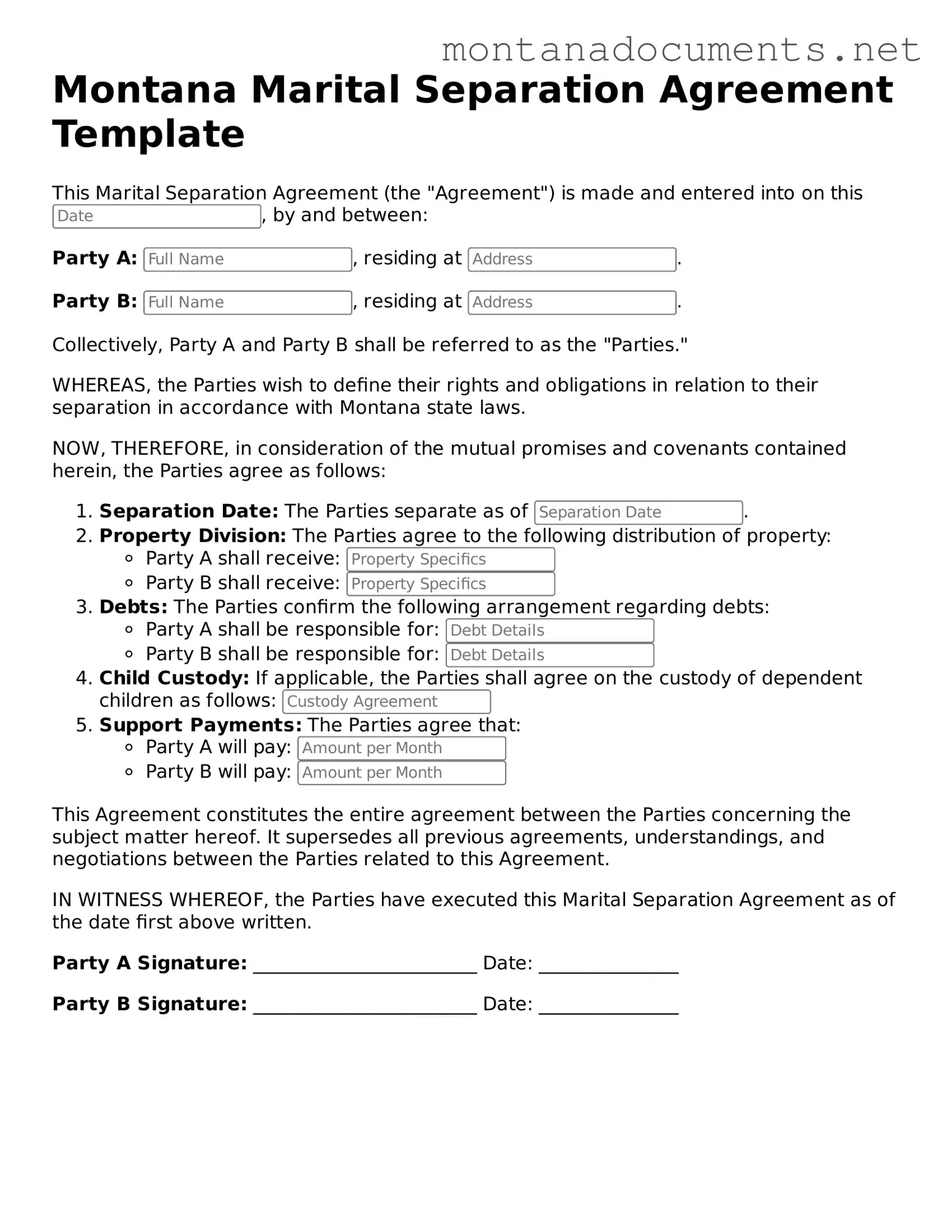The Montana Marital Separation Agreement is similar to a Divorce Settlement Agreement. Both documents serve to outline the terms under which a couple will separate their lives and assets. In a Divorce Settlement Agreement, the couple finalizes the terms of their divorce, including child custody, division of property, and spousal support. While the Marital Separation Agreement may precede a divorce, it often includes similar provisions, allowing couples to establish clear expectations and responsibilities during their separation period.
When navigating the complexities of relationship agreements, resources such as the TopTemplates.info can provide valuable templates that help individuals draft documents that meet their specific needs, including those related to employment and separation agreements.
Another related document is the Child Custody Agreement. This document specifically focuses on the arrangements made for the care and upbringing of children following a separation or divorce. Like the Marital Separation Agreement, the Child Custody Agreement addresses important issues such as visitation rights, decision-making responsibilities, and financial support for the children. Both documents aim to prioritize the well-being of the children involved and ensure that their needs are met during what can be a tumultuous time.
The Cohabitation Agreement also shares similarities with the Montana Marital Separation Agreement. While typically used by unmarried couples living together, a Cohabitation Agreement outlines the rights and responsibilities of each partner regarding property, finances, and other matters. In situations where a couple decides to separate, both agreements can provide a framework for resolving disputes and clarifying expectations, albeit in different contexts.
A Property Settlement Agreement is another document that resembles the Marital Separation Agreement. This type of agreement focuses specifically on the division of marital assets and debts. Like the Montana Marital Separation Agreement, it aims to provide clarity and prevent future disputes over property. Both agreements are crucial in ensuring that each party understands their rights and obligations regarding shared property, which can be especially important during a separation.
Finally, a Prenuptial Agreement bears similarities to the Montana Marital Separation Agreement in that it addresses the financial and property rights of each partner. While a Prenuptial Agreement is established before marriage, it serves to outline how assets will be divided in the event of a separation or divorce. Both agreements seek to protect individual interests and ensure that expectations are clearly defined, thereby reducing potential conflict in the future.
